The Effects of Captivity & the Links to Horror
to Cetaceans & Pinnipeds
By: Sarah J. Sweedland
When you think of whales and dolphins, you think of aquariums. Those neat places where you take your children to see these large, mysterious, aquatic-acrobats. I, myself, am guilty of paying to see these shows and animals. I’ve been to Marineland in Niagara Falls, Ontario several times throughout my thirty-two years and I’ve also been to Sea World in Orlando, Florida twice in my teenage years. I love seeing these amazing animals. However, I would prefer to see them in their natural habitat, and I’m not talking in those concrete pools in aquariums. No I’m talking about seeing them int he World’s Oceans. Where they belong.
When I was in the third grade, we did a science unit on whales and ever since then I’ve been hooked. I fell in love with Killer Whales. I think it was their shiny black and white look, the sleekness of their bodies and the fact that something so big was so graceful, acrobatic, and beautiful. I needed to know everything there was about the orca, and I did. I became obsessed. I read books, wrote out facts, everything and anything I could get my hands on. Then that moved to learning about other whales, and dolphins. I wanted so bad to work with orcas; to become a killer whale trainer or a marine biologist (a career that would have turned out to be a horrible choice as I found out in 2001 that I get terrible sea sickness).
Something happened as I got older; the pools where these orca’s and dolphins lived, were not as large as they had been when I was seven. Things just didn’t seem proportionate. Still, I convinced myself that it was alright. These aquatic parks could no longer capture animals from the wild and that they are breeding them. For conservation and education. If they were born in captivity, then they were with their families, and would never be able to survive if they were released in the wild. That was pure ignorance on my part.
It’s really a catch 22, because in a small way, I’m right. A whale or dolphin who has been kept in captivity for decades or have been born in captivity would never survive long in the wild. They rely on their pods to survive and for socializing. How would they know how to hunt if they are always being hand fed? Never having to hunt in captivity. So what do we do?
My answer is, I really don’t know.
Unfortunately there’s been a lot of information out there right now. So much so that this started out as a blog and is likely to become an essay.
As sad as it is, my love for these animals had never died, but it took an article out of the Toronto Star to reawaken my passion for these animals. To find a way to help them. I no longer want to turn a blind eye to the horrors of captivity. It’s time to stop being an ostrich, and get my head out of the sand.
Marineland, Niagara Falls, Ontario, Canada:
August 15th, 2012 changed so many things for me. I was sitting at work and I happen to grab the Toronto Star that gets delivered to the security desk, and on that front page was a picture of a Seal named Larry who was suffering behind bars at the aquarium forty-minutes down the road from my home. What was I doing? Nothing. Sitting on my ass at security job that, to be honest, sucks. In a way I sometimes feel like I’m keeping all the residents that reside in the two-hundred and ninety units, in captivity. It’s like an asylum here.
I fold out the paper and I read this article detailing the horrific conditions that the pinnipeds (seals, sea lions and walruses) are living in. Eight former Marineland staff members blew the whistle on the park by describing the neglect that have left these animals in horrible shape and condition. We don’t see the problems. We are just the people who pay to see these animals, and have convinced ourselves that they are happy. We don’t see the fur loss, the red irritated eyes, we don’t see what these trainers and staff members have seen despite their best efforts.
Larry’s a harbour seal, who has only been at Marineland for eight years and is now a shell of himself. His eyes are swollan and irritated because of poor water quality. He was pulled from the water and kept in a small waterless pen or a metal box on wheels.
(photo courtesy of The Toronto Star)
It’s not just Larry who is suffering. Sandy and Baker, two of the parks star Sea Lions are as well. In the off-season, they are enclosed in what is called “dry dock”. A concrete pen with a wooden platform and a bucket of water on the side.
(Photo courtesy of The Toronto Star)
The water quality was so horrible that both of them would stick their heads in the bucket of fresh water to sooth the burning feeling. Baker, the giant male sea lion, has no lens in his left eye, as he was put back into the water and barked at a trainer and the lens flew out.
(Photo courtesy of The Toronto Star)
Sandy died in July. Six out of seven seals are blind, have impaired vision or have suffered from serious eye infections. The walruses are being neglected due to lack of staffing and cut hours. They are highly social animals that crave attention in captivity and are confined in dry dock pens that are waterless. For months the only attention they got were from the trainers allowed to come in to do feedings. The only light in the dark Barn was from a small skylight above. The Walruses suffered a great deal, weight loss, fur loss, eye problems, stress, and even depression. Zeus, a large powerhouse of a walrus, was disintegrating before the trainers eyes. He was suffering regurgitation issues and was in a pen that was barely big enough for him to turn around in, and lack of trainers often meant that they would find him laying in his own feces.
(Photo Courtesy of The Toronto Star)
The one walrus, Smooshi, had wildly inflamed flipper which, according to the veterinarian was a chemical burn, to her back flippers from the bad water conditions.
(Photo Courtesy of The Toronto Star)
They have kept a lone killer whale, Kiska, which is illegal to do in the United States because of the social level of these animals. They need their own to communicate and socialize with. Marineland once had five orca’s but four have since died. Sea World even sued the Canadian aquarium for the return of one of their male orca’s on loan to help sire calves, when they saw the poor conditions. Kiska has been alone since November 2011.
(Photo Courtesy of The Toronto Star)
Five female dolphins were left in bad water in a concrete pool in an area called, “The barn”. Former employees said that they would lay at the bottom of murky green water or thrashed wildly. Everything was in reaction to the changing chemicals. Skin would fall off in chunks and they wouldn’t eat. Their water wasn’t changed until show season started in May. This lasted seven months.
(Photo Courtesy of The Toronto Star)
They also had issues in Arctic Cove, where they housed their collection of Beluga whales. Marineland is a leader in Beluga breeding and exports a lot of their “stock” to other aquariums. One night, baby Skoot was attacked by two male beluga’s that repeatedly pushed her up against the rocks and sides of the pool. Biting and nipping at the young whale who cried out to her mother for help. Her mother intervened but could only stave off the attack for so long. A park employee who a guide and not trained for dealing specifically with the whales and dolphins, radioed for help and was forced to watch this horrible attack. It took two hours for the park to get two of their trainers back in, and by then it was too late. They managed to pull the baby beluga out of the water but it was too late, Skoot convulsed and died in their arms.
(Photo Courtesy of The Toronto Star)
Marineland owner said that Skoot was attacked because she was sick. Contracting bacterial meningitis. He was quoted as saying, “if animals see another animal is going to die, they kill it.” From what I’ve learned of whales, this isn’t the case. Whales have been known to take care of their own, or die alongside them when they are beached. But what do I know? I wasn’t some moron who bought an aquarium after coming from a background of European circus’ (and we all know what horror stories have come from over there, WSPCA commercials say it all). John Holer, insisted that there was no problems with the water, saying that he takes care of his animals better than he takes care of himself. That doesn’t offer much hope. He also claimed that the eye problems suffered in the dolphins and the pinnipeds were because of old age. That wasn’t the case. There was serious problem with the ozone levels of the water, when even the trainers had to wear masks and one trainer couldn’t get a full body rash to go away.
One of the problems is, that here in Canada we don’t have any laws or policies that protect marine mammals. The Canadian Association of Zoos and Aquariums is a privately owned company that issues licences to places like Marineland. They are not a government-run agency. When the story broke, they did go into Marineland and did a tour of the facility that took less than three hours. What they found was that the place was not in any violation of their orders. The OSPCA has stepped in but they were limited in what they could do at first. The problem was with whether or not they could include any animals under veterinary care in their investigation. A small but critical clause that says the OSPCA has no jurisdiction in any cases where veterinarian care is being provided or a person acting under the supervision of a vet’s orders. What this meant was, the animals that needed the OSPCA’s help the most were under the care of a veterinarian, which meant they were off-limits. But is it? Madeline Meilleur from the Ministry of Community Safety and Correctional Services says “We would never have introduced a bill that would have a loophole. And, according to our legal department, there’s no loophole.” However she admits that she doesn’t have the power to tell the OSPCA what to do as it’s a private charity that falls under her ministry. She is reviewing the act and says she would like to see government licensing of zoos and aquariums in Ontario.
Marineland hasn’t just stood there and let these allegations ruin them. They fought back through lawyers. The theme park served former trainer with a $1.25 million lawsuit for telling the Toronto Star about Kiska, their lone killer whale, was bleeding from her tail. The trainer had been fired the day before. She said that the killer whale had been bleeding on and off for months.
(Photo Courtesy of The Toronto Star)
Marineland claims the accusation was false and inaccurate. Marineland claims that the trainer was upset because the theme park refused to give permission to her boyfriend to film a reality show around him and one of the walruses. Her boyfriend led the parade of whistleblowers, which started with eight and now have fifteen former trainers and staff coming forward. All backing each other’s claims. The trainer has since decided to fight back and has filed a counter-lawsuit against Marineland. One I’m sure will make this battle go on for a long time.
Sure all of this is surely going to affect the city’s tourism, but should that really be the main concern? No, it shouldn’t be. The main concern is the health, safety and well-being of this animals. Animals that aren’t easy to take care of. They aren’t in anything that is even remotely close to their natural habitat. Not that it’s easier for timber wolves in the Toronto Zoo, because it’s equally not fair, but it is easier to recreate a forest then it is an ocean.
Dolphin advocate, Richard O’Barry, said in an interview that it was not a surprise about the accounts of the former employees. He first protested Marineland in 1991. What surprises him the most is that Canada is far behind some of the third world countries. “For a country as advance as Canada not to have offered any protection whatsoever (to marine mammals) is shocking.” Ric O’Barry said. He is right. He should know.
This is still an ongoing concern here in Canada. While Madaline Meilluer is working hard to amend these problems. Her staff has been working hard to give the OSPCA more power and working hard on changes although licensing zoos and aquariums provincialy will require a new law.
Sea World, Orlando, Florida; San Antonio, Texas; San Diego, California:
Marineland isn’t the only marine park that’s under scrutiny. The aquarium chain that brings in billions and billions of dollars a year is facing a lot of allegations that they aren’t what they say they are. That their animals face unsafe living conditions as well. Ones that might shock you, and might not. Sea World is just as much at fault as Marineland. They may not have as many issues with water conditions as Marineland but they have a much more serious one.
Tilikum!
(photo courtesy of http://digitaljournal.com/img/3/2/2/3/4/8/i/1/0/3/o/tilikum.jpg)
I’m the last one to ever say anything bad about a killer whale, but let’s get somethings straight here. This is a big mo-fo of a whale. Tilikum has gotten around. He was captured at the age of two off the coast Iceland and made his first place of captivity in British Columbia, at Sealand of the Pacific in South Oak Bay. The first of three people to die who are linked to Tilikum was a young trainer who slipped and fell into the water. It is believed she drowned when Tilikum and two females started to play with her. Although he wasn’t directly involved in the young trainers death, he was a part of it and is still being primarily blamed for it. He was then moved in 1992 to Sea World in Orlando Florida. Unlike Sealand in British Columbia, Sea World’s trainers worked in the water directly with the killer whales. With the exception of Tilikum. He was two big and because he was linked to the fatality in British Columbia there were obvious trust issues. The second death also cannot be linked directly to Tilikum. A 27-year old man remained in the park after it closed, hiding from security and eventually ended up in the Orca pen with Tilikum. Naked. He was found the next day, with bruising and wounds. An autopsy revealed that those were all post-mortem and that he died of hypothermia and drowning. It wasn’t until 2010 when Tilikum could be directly linked to the death of another trainer. A 40-year old trainers death was witnessed by some of the park’s patrons. She was laying next to 12,000 pound orca on one other platforms that is about a foot into the water. She was then pulled into the water by her pony tail although there are other statements that say it was her arm. She was thrashed back and forth and other employees tried distraction methods to get Tilikum to release her. Eventually they managed to get him into a smaller, pool where they managed to calm him down. He released the trainers body. An Autopsy concluded that her death was caused by drowning and blunt force trauma. Her spinal cord was severed as well as other injuries. The park would be fined by the Occupational Safety and Health Administration for three safety violations. A little over a year later, Tilikum was back performing. Hands off and no water work with Tilikum is the current policy. precautions are apparently in place as a prevention measure in case of any future issues.
What I found interesting was some comments I found on this one website that announced that Tilikum would be back in the Sea World show. People were talking about how great it was to visit Sea World and that they would go often and all the time just to get splashed and to see the whales do tricks. Not one said that it was a bad thing. Not one commented on how the effects of captivity effects these animals. But it does.
Whales aren’t just put into these pools and fed fish. Those fish are frozen, half thawed fish. Lacking the nutrients of fresh water fish. The gills are shoved with antibiotics, antacids and vitamins and injected with tap water to add nutrients that aren’t found in frozen or thawed fish. They are fed gelatin to help combat dehydration. Tilikum alone consumes over 83-pounds of gelatin a day to combat dehydration. Their teeth are often breaking ont he horizontal bars of the gates that the whales gnaw on in a display of aggression, which can break their teeth exposing tooth pulp. If untreated, that decaying pulp can form cavities that get plugged with food which cause infection and inflammation that can cause harm to their immune and cardiovascular systems. The only solution is the trilling of the teeth. Several times a day each orca has to have their teeth flushed to keep bacteria from getting into their systems. They train the whales by using food and massages which is called positive reinforcement. They are taught to put their chin on the deck then are shown the high-speed tool, that is like a Dremel tool that we have in our homes. They rub their fins or feed them. Then they touch the off drill to their tooth and reinforce the animal before turning the drill on the lowest speed. this continues until they get the drill to the highest speed. The procedure is bloody and painful for the animals. Sometimes teeth are hollowed out or removed as a preventative measure.
(Photo Courtesy of Animal Connection)
The death rate is also higher in captive animals then if they were in their natural habitats. A study done by two government scientists analyzed yearly data that showed a 6.2 mortality rate in captive non-calf killer whales, where in the wild the mortality rate of non-captive, non-calf killer whales was 2.4. That’s a huge difference. There’s a greater chance for injury in captivity then there is in the wild. Incidents occur when you don’t know what you’re doing. Or what types of whales you have. Especially with orca’s. There are two types of orcas; Resident and Transients. The only significant difference is in what they eat. Residents eat fish, travel in larger family unit than their distant cousins, the Transients. Transients travel further distances and stay in a smaller unit. They eat small mammals, like seals, sea lions, dolphins, otters, birds, and the like. Some even go after large whales like humpbacks and gray whales. The two groups don’t mix. Residents will win out every time over the transients. Sure the transients are ballsy enough to go after the larger prey, but that doesn’t mean that they can take on the residents. A witnessed account saw a pod of residents just booking it through the water and 100-yards away were three transients trying to escape. The outcome wasn’t in the transients favour. Where am I going with this? Well, it has something to do with what I said earlier. With not knowing your types of whales. Back in 1978, Kotar was taken from the waters of Iceland at just one year of age and spent seven years at Sea World in San Diego before being relocated to Sea World in Orlando where he spent another seven years. Orlando brought in another very large male with an attitude named Kanduke and the two did not get a long. Kotar was from a resident pod and Kanduke was from a transient pod. An altercation occurred that had Kotar biting Kanduke’s penis, severely wounding it and then Kotar being transferred to Sea World in San Antonio. It would be the last place Kotar would ever see. He had taken to mouthing and tugging on the horizontal bars of the gate of his pool and one day that gate crashed down on his head, crushing his skull. He bled out quickly to his death. This problem could have been avoided in two different ways; 1) know your whales and their types and don’t put them together, and 2) don’t put these animals in captivity. At all.
Unfortunately the death rate doesn’t stop there. Rare deaths happen. Ones that you wouldn’t see happen out in the wild. Kanduke died because of SLE (St. Louis Encephalitis) which was transmitted by mosquitoes. One of the trainers witnessed a black mass of mosquitoes hovering over Kanduke’s back. After death it was revealed that he died of SLE. This was the first ever case that SLE was found in a marine mammal. In San Antonio, 14-year old male, Taku, died because of the West Nile virus, and six other orcas all tested positive for the same virus.
A pregnant orca, Gudrun, who was lucky enough not to suffer from a collapsed dorsal fin, was the perfect money-maker for Sea World. They had her pose with tourist, holding poses for minutes for photos. The stress was too much on the unborn calf so when Gudrun went into labour, the staff couldn’t find a heartbeat and presumed the calf was dead. Manually the staff had to remove the stillborn calf from Gudrun, where she hemorrhaged and was stuck unshaded in one of the slide out areas. The staff had to cover her back with zinc oxide. The calf was not dead, but deformed. Not long after giving birth, they had to separate Gudrun from her calf as she was attacking her daughter. After a while, Gudrun nudged her calf gently through the bars and then died a few hours later.
In San Diego, female orca, Kandu bled to death after a fight with another female orca who she rammed caused Kandu to break her jaw and severe a major artery. (http://youtu.be/bS5jo7d4ENE)
(Photo Courtesy of timzimmerman.com)
She bled out in 45 minutes in front of Sea World’s patrons.
Is this really worth it? All this carnage and pain? Aggression in the wild towards family members is unheard of. But in captivity they aren’t all related. Like I said earlier, some come from resident pods, and others come transient pods. They don’t get along. Plus females are very protective of their calves, so they don’t take kindly to others getting involved. Of course there is going to be aggression in captivity. After all that you’ve read, do you blame these animals? Do you blame them for being pissed off? No, I don’t.
But people do. People blame them for deaths of the trainers or the stupidity of a drunk guy who thought it be cool to just get in the water with a giant bull like Tilikum where his space isn’t that big. If I had become a trainer, I would be smart enough to have researched the risks I’d be taking. Just the same way as marine biologist like New Zealand’s Ingrid Visser, know the risks of getting in the water with orca’s. Yes Visser did that because she loves them so much. Any animal you take from their natural habitat and put into a cage, is eventually going to become aggressive. Especially in their older years. Human seniors sometimes become aggressive in their old age as well. It’s just fact. Old age just happens faster to these animals in captivity then it does in the wild.
Have we forgotten the importance of sound for these animals? They use sonar to locate food, each other and objects. Echolocation is key for these animals yet in a concrete pool it’s just bouncing around. Dolphins and whales are sensitive to sound, it’s how they get around and communicate. It’s essential for these animals to socialize, eat and find their way. Each click they emit goes out and returns a signal through their lower jaw which travels to their ear. It’s a feel and a sound. Sounds of banging on the glass from children and people at aquariums is stressing for these animals which is why there is usually a sign telling people not to bang or knock on the glass. Loud noises that aren’t natural for these animals can cause stress. Which can cause ulcers. All lead to health issues.
Pinnipeds at Sea World also have it hard. Recently a death of a sea lion in San Antonio was caused by an uncovered drain where the Sea Lion got caught and drowned in a holding pool. Sea World San Antonio fixed the drain issue and checked all other drains for any problems. Staff was sadden by the death of the young female. I don’t doubt that.
Captive Marine Mammals have more rights in the United States then they do here in Canada. For one, they have the government to look out after them as they fall under the Animal Welfare Act under their United States Department of Agriculture. Here in Canada they don’t fall under anything. The USDA concluded their official investigation on the park. But before in 2009 and 2010, they had found that the employees had failed to properly latch the covers on the drain. Is this another case of ignorance and neglect?
(Photo Courtesy of The Washington Post/Getty images)
I don’t think these trainers go in with the intention of harming these animals. The trainers enable these shows to go on, but have you ever heard of a trainer who was there because it was just a job? I honestly believe they love the animals they work with. I also believe it’s difficult for trainers to leave their animals in order to speak out against captivity. It wasn’t easy for Marineland’s Phil Demers or Christine Santos to leave the animals they spent years working with. An attachment grows towards that animal. Just like we get attached to our cats and dogs. But there is so much more about captivity that I haven’t even touched on.
http://www.seaworldofhurt.com/ten-things.aspx
Obtaining these animals for these sea circus’ is still an act that goes on today. In these acts is a darker side that nobody really knows about.
Taiji, Japan:
Everybody loves dolphins. They have this natural, happy way about them. They always seem like they’re smiling and happy. Little do we know that there is a sadder side to these animals. One that is severely misunderstood.
Dolphins are among, if not (in my opinion), the most intelligent species on this planet. They have feelings. They know when something great is going to happen and they know when something horrible is going to happen. They care for their families as we care for ours. They’re protective of their young and they take care of their elders.
Taiji is this small little village of 3, 500 residents. When you arrive to the town you are greeted by so many smiling whales and dolphins painted on sides of buildings. There’s even a Dolphin Museum. It’s location is in a protected nook of a bay where the waters are shallow and there are many islets. Usually this cove is a public beach. Children play and swim. Sometimes dolphins will swim right through the people, playing and being curious. There are stairs that lead down to the beach and paths to walk along. The cove’s beautiful waters are a gorgeous blue, the sun glistens and sparkles. That is until September comes.
Between the months of September to March, that beautiful place becomes a place of horror. A place of death and imprisonment.
There is so much money in the international trade on live dolphins that it’s not even funny. In the United States to import dolphins and whales that are caught in the wild. But it’s such big business that how many of these aquariums are aware of the history of the dolphins and whales they already have? All dolphins have a lineage, and there is likely an ancestor to many of the captive born dolphins are likely from Taiji. The Taiji FU makes around $32, 000 per live dolphin it captures. Already trained dolphins sell for way more money. The trainers from a nearby swim-with-dolphin programs and from the Taiji Whale Museum which has a live dolphin show, come to the bay to select individuals for the industry. Families are torn apart.
The drive by the banger boats is where it all begins the link between being imprisoned and being slaughtered. There isn’t much of a difference here. Fishing boats have long metal poles attached to them, once a pod is located, five or more boats will surround the pod and start banging on the tops of these long metal poles creating a sound curtain underwater that the dolphins and whales try to get away from. In the process these boats and their poles drive them towards the cove. Once in the cove, they are netted off.
When the Dolphin hunt begins, that public path to the bay is barricaded and has become a criminal offense to trespass.
The dolphins and whales are now secluded in a shallow area. They are totally aware that this isn’t a good situation. They become stressed and agitated, as they find themselves surrounded by nets. Some try to escape, but they don’t make it. Their cries are different from the ones you hear in audio clips, they are distressed cries. They know their fate.
(http://www.facebook.com/SeaShepherdCoveGuardiansOfficialPage?ref=ts&fref=ts)
Some are selected for imprisonment, being tossed by the tails on to smaller boats, called skiffs and then tossed into the pens for their captives.
(Photo Courtesy of http://www.facebook.com/SeaShepherdCoveGuardiansOfficialPage?ref=ts&fref=ts)
Others await their fate. Once the trainers leave and they have their selections, things change. The fishermen don’t care which dolphin gets slaughtered. Elders, parents, teenagers, and even babies are all ripe for the slaughter.
(Photo Courtesy of Tumblr; Original poster unknown)
Slaughter is far from humane. Killing dolphins in front of their families, leaving them to swim in the blood-red water in complete anguish. In the 2009 Academy Award Winning documentary, disturbing footage was captured showing the disgusting, inhumane slaughter of dolphins. The footage was not easy to obtain and despite his best efforts director, Louis Psihoyos, tried his hardest to keep it legal. It just wasn’t possible. The footage is really too disturbing and distressing for me to want to talk about, but then again, I didn’t want see it either but I watched it.
Fishermen would pull the skiffs up close to a pod that was often huddled together and stab at them with knives and harpoons. Dolphins that were injured and ones that weren’t thrashed and fought their hardest to survive. Bleeding out the more they fought. Slower attempts at the killing as the fishermen would stab one and then leave it to stab another. It was horrifying.
(Photo Courtesy of Sea Shepherd Cove Guardians: http://www.facebook.com/SeaShepherdCoveGuardiansOfficialPage?ref=ts&fref=ts)
The backlash the town received was immense, but they refuse to stop. They say it’s tradition and their right to kill these beautiful harmless creatures. Some huddle close together in fear, spending the last few minutes of their lives with one of their loved ones. Dolphin activist, Ric O’Barry stated a fact at the premier of the documentary;
“Dolphins have a brain larger than the human brain. They’re self-aware, like people and like the great apes. They’re not fish, chicken, cows, pigs or other domesticated animals.” -Ric O’Barry
(Picture Courtesy of Sea Shepherd Cove Guardians: http://www.facebook.com/SeaShepherdCoveGuardiansOfficialPage?ref=ts&fref=ts)
Times have changed. This kind of mass killing isn’t alright. Now they say they have found a more humane way to kill these animals. The fishermen stab the dolphin behind the blowhole. Afterwards the dolphins are still alive. Death isn’t instantaneous. Thrash in agony in their own blood. Some even throw themselves on the rocks either in an effort to escape or to quicken the process of their death.
What is being done with the dolphins and whales once they’re slaughtered? They are sent to a butcherhouse where they are cut up and packaged and sold to the public.
(Picture Courtesy of Sea Shepherd Cove Guardians: http://www.facebook.com/SeaShepherdCoveGuardiansOfficialPage?ref=ts&fref=ts)
Selling dolphin meat isn’t as lucrative as exporting live dolphins for entertainment. It’s not a secret that Dolphin meat isn’t good for you. But in Japan, the distributors, don’t care. They will package it but compared to the $32, 000 they make on one live dolphin, they probably only make $600 in total from selling the meat. There’s a much higher demand for other whale meat, then there are for dolphin meat. A lot of controversy is going on as it’s been found out that some of the meat that is being sold over in Japanese markets are labeled as whale meat but was tested by scientist and turned out to be dolphin meat.
When distribution of the meat slowed, distributors tried to give it away to the schools for the children’s mandatory lunches. Lunches for schoolchildren were deemed to have mandatory lunches where they had to eat what was given to them.
News of toxic levels of mercury found in dolphin meat has only deterred some of the Japanese residents to turn away from eating it. Levels that are considered healthy are registered at 0.4ppm’s. In dolphins they are finding levels as high as 100ppm of mercury and 2.6ppm of PCB’s. Mercury poisoning can cause deformities in the fetus of pregnant women, as well as make your hair fall out, headaches, possible heart attacks, effects their nervous systems, problems walking and speaking. In extreme cases it could cause insanity, paralysis, comas and death. But mercury poison isn’t just restricted to Japan, it is a concern in all marine products worldwide.
Dolphin meat isn’t only just sold to humans, but is processed in dog food in Japan. Do you think the toxic levels of mercury is good for your pet? Probably not.
(Photo courtesy of http://www.dive-hive.com/news/2009/09/justification-tradition-the-bloody-dolphin-hunt-in-taji-japan-will-carry-on/)
It doesn’t matter if dolphin meat are toxic or not. What is being done over in Taiji, Japan is uncalled for. When I watched the documentary “The Cove” I was prepared for the tears, and I thought I was prepared for images, but I wasn’t. I wasn’t prepared at all. Do I regret watching this documentary? Absolutely not. I will make it my job to get as many people in my life to watch it, and see for themselves, and maybe they’ll pass it on to others.
Not all Japanese people are linked to Taiji. It’s unfair to blame the entire country for what residents in the larger city are unaware of. The showing to “The Cove” in Japan was short-lived. May have only ran for three nights before it was yanked from viewing. But since that documentary came out, Japanese animal rights activists started to speak up against the dolphin slaughter. In November of 2012, a demonstration in Tokyo attracted 70 protesters. In a country like Japan, where traditions are upheld to the utmost respect and regard, nobody ever speaks out against them or the issues. The government and extremists discourage people from speaking out with threats, while at the same time producing documents that these hunts are traditional and scientific. Where have you ever heard of scientist killing a whale or dolphin for research? You don’t. Research comes from the marine life that are found already deceased. The Japanese government have even falsified documents that claimed that dolphins and whales are eating all their fish, which is a major part of the Japanese diet.
The importance of these protesters coming out is a HUGE step in the right direction. When people in the country where this horrifying slaughter is taking place sees a problem and starts speaking up against it, is a huge deal. It’s that one thing that can help stop this. The more protests, the more chances these dolphins and whales have.
I often wonder if they could use sound to drive them into the cove, what’s keeping us from using sound to drive them further away from the cove and certain death? The only reason being is that, that noise causes them too much stress and we aren’t cruel people. But once again, you sit on a catch 22. Are we cruel to use sound against them to drive them towards safety or are we cruel because we watch killers use sound against them to drive them into death?
International Whaling Commission:
I refuse to get into too much detail about this committee because it is in my opinion that they are fairly corrupt. Some of the points that I learned about them however are; 1) They do not include small cetaceans on their list of off limit cetaceans. Small Cetaceans include dolphins, porpoises and other small toothed whales. This is not a fair assessment of these animals, as they are deserving of the same rights as the larger baleen whales. 2) Japan is currently leading the charge in over-throwing the anti-whaling laws globally. This would allow them to hunt more and make a profit from the whales all over the world. Also, they have managed to “buy” votes from smaller, third world nations. Some don’t even know what types of whales or dolphins they have in the oceans around their countries. Some even admitted on the documentary “The Cove” that they’ve never even seen a whale in their lives. How are these people even allowed to be on a committee when they are unfamiliar with the subjects? How are we, as activist, able to trust that this Commission is trustworthy in the protection and conservation of these amazing animals? We can’t. If the votes can be bought, whose to say one of the larger countries won’t decide to support Japan’s motion to overturn the anti-whaling laws?
Afterall, everybody’s got a price.
Conclusion:
When all is said and done, there is still a gruesome tragedy taking place on the other side of the World. But there are crusaders who are working hard to stop what is happening. Sea Shepherd is there, not just in Japan, but all over the Globe trying to stop any and all marine life from being extinct and/or taken captive. They are working hard to stop the importing of shark fins that are being cut off of live sharks then the shark, finless is being tossed right back in the water to die. They have Cove Guardians stationed in Taiji every year, keeping an eye on what is transpiring over there.
Dolphin Activists, Richard O’Barry learned the hard way of what captivity can do to dolphins and other whales. He was the first person to ever capture dolphins for the television show, “Flipper.” He watched as when the show ended those five dolphins that played the role were put into an aquarium and lived in horrible conditions. Regret sunk in fast and he wished he hadn’t done what he did. The day that Flipper, a dolphin named Kathy, died in his arms at the Seaquarium, was the day he decided this had to end. He was out the next day, getting arrested for releasing dolphins. His hard work and passion to bring attention to the imprisonment of dolphins has opened a lot of eyes. It has opened the eyes to what is going over in Japan.
It’s people like O’Barry, and the founder of Sea Shepherd, Captain Paul Watson (who have since resigned due to multiple warrants out on him), the cove guardians, Louis Psihoyos who brought us the documentary “The Cove” and the people of Marineland Animal Defense here in Ontario, that are inspiring, and heroic. It’s people behind the scenes, getting that information out there that those people have given us. We can stop this with education and action.
Every time you are going to a dolphin or whale show, or pay to swim with the dolphins, is another amount of money that is enabling the killers over in Taiji to keep capturing and torturing these animals. Every time you walk through those gates of Marineland or Sea World, you are blind to what is going on when the park closes and in the off seasons. The conditions these animals are living in.
Right now the Ontario Society of the Prevention of Cruelty to Animals (OSPCA) has given Marineland in Niagara Falls some mandatory instructions that they must be complete by the end of January 2013. Two have already been completed. Does this make things better? No, it’s a band-aid. But it brings us back around to the debate of should these animals be released back into the wild where they will be unable to properly fend for themselves? Or are improved “living” conditions the best we can hope for while they are imprisoned?
When it comes time and I have children of my own, I refuse to allow them to partake in any school trips that will take them to these places. If they have questions about these animals, then I feel I can answer them to the best of my ability. I can provide pictures of these animals in the ocean taken with care from photographs and even video. I would rather they know the truth. As guilty as I feel for the years that I pushed to visit Sea World, which I got to do twice in my teen years, and the several times I visited MarineLand. I would feel like a hypocrite if I was to allow my children to aid in these practices. These are my own opinions, of course. I cannot tell you what to do, any more than you can tell me that my views and opinions are wrong. I just hope that this blog or essay, has at least made you think twice.
If I have managed to stop at least one person, or one family from going to these sea circus’, then I’ve helped these animals in some way. It may not be much, but it’s a start. Trust me when I say, if I could just take off and join Sea Shepherd, then I would already be gone. If I could take off and be in Taiji, Japan to show support to the Guardians of the Cove, then I would be there. If I could go back in time to when I was younger, I would have chosen a different path in my life. Although I may be living with regrets of a path not taken, despite the size of the dream…I’m on my way back in a different way.
My heart breaks, and my stomach turns at the horrific undertakings in Taiji, Japan. Knowing what I know about these animals, makes it that much harder to endure. Except I’m not the one enduring this horror. The dolphins are. And it needs to stop. It stops with us.
Resources
Marineland, Niagara Falls, Ontario, Canada:
http://www.thestar.com/news/canada/2012/08/15/marineland_animals_suffering_former_staffers_say.html
http://www.thestar.com/news/canada/2013/01/16/ospca_orders_marineland_overhaul.html
Sea World, Orlando, Florida; San Antonio, Texas; San Diego, California:
Tilikum photo from: http://digitaljournal.com/img/3/2/2/3/4/8/i/1/0/3/o/tilikum.jpg
http://www.cbsnews.com/stories/2011/03/31/earlyshow/living/petplanet/main20049150.shtml
http://www.themeparkinsider.com/flume/201103/2414/
Source: http://www.takepart.com/photos/7-reasons-orcas-and-captivity-dont-mix
Source: http://www.takepart.com/photos/wild-killer-whales
http://www.takepart.com/article/2013/01/27/whales-and-dolphins-arent-only-victims-mammal-captivity
http://www.seaworldofhurt.com/ten-things.aspx
Taiji, Japan:
http://www.whalesongart.com/news/what-really-happens-at-the-cove-taiji-japan/
The Documentary “The Cove” by Director Louis Psihoyos, featuring Dolphin activist Richard O’Barry
Picture link: http://www.facebook.com/SeaShepherdCoveGuardiansOfficialPage?ref=ts&fref=ts
http://www.huffingtonpost.com/ric-o/behind-the-tarp-video-of-_b_812874.html
http://www.cbsnews.com/2100-205_162-6470017.html
http://animal.discovery.com/tv/blood-dolphins/dolphin-hunters/dolphin-meat-mercury.html
http://savejapandolphins.org/blog/post/a-first-japanese-protest-the-dolphin-hunts
http://savejapandolphins.org/blog/post/japans-growing-animal-rights-movement
IWC:
The Documentary “The Cove” by Director Louis Psihoyos, featuring Dolphin activist Richard O’Barry
Conclusion:
http://www.thestar.com/news/canada/2013/01/16/ospca_orders_marineland_overhaul.html
The Documentary “The Cove” by Director Louis Psihoyos, featuring Dolphin activist Richard O’Barry
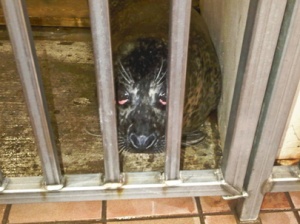
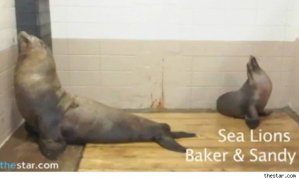
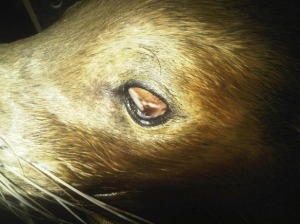
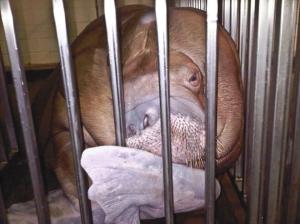
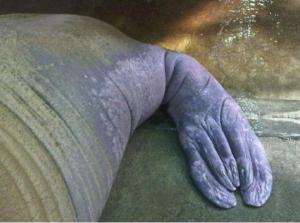
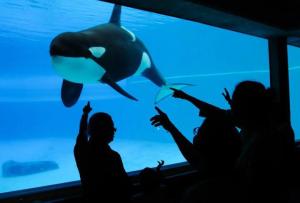
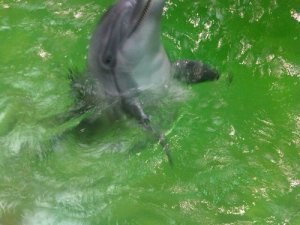
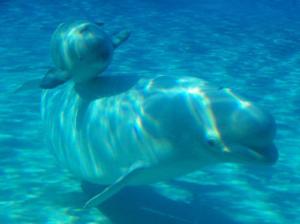
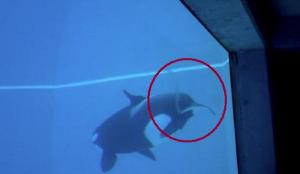
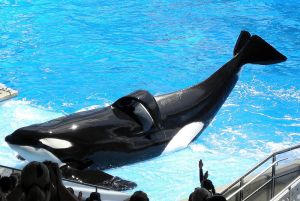
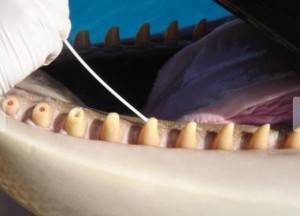
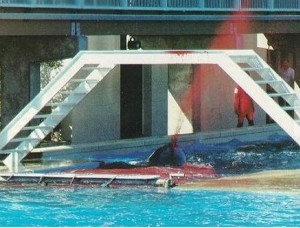
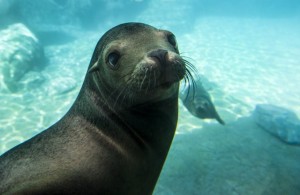
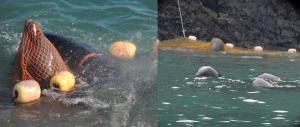
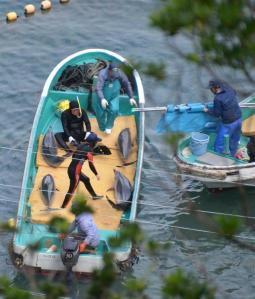
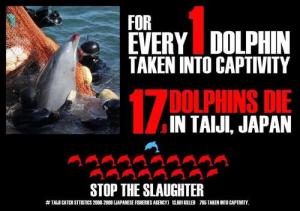
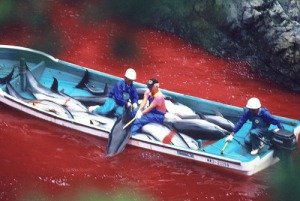
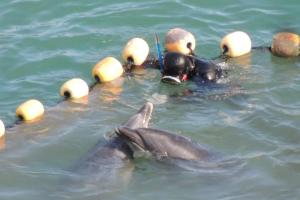
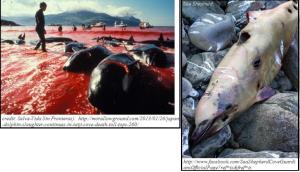

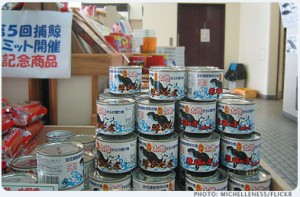
It is really a great and useful piece of info. I’m glad that you shared this useful information with us. Please keep us informed like this. Thank you for sharing.
I have been browsing online more than 3 hours today, but I never found any attention-grabbing article like yours. It’s pretty value sufficient for me. In my view, if all site owners and bloggers made just right content as you did, the internet shall be a lot more useful than ever before.
It’s really a great and useful piece of information. I am happy that you shared this useful information with us. Please stay us up to date like this. Thank you for sharing.
Wow! So much information and so much to take in. It’s horrifying that these things can happen. As a Canadian, the state of our laws regarding zoos and aquariums is such a disgrace to me. And you know, even if you aren’t in Japan, you are here trying to educate people and let them know of what is happening around the world. Kudos to you! That’s just as important in my eyes. The more that know, the more that can help stop it!
I simply want to tell you that I’m newbie to weblog and actually liked you’re blog site. Likely I’m planning to bookmark your website . You actually have superb writings. Thanks a lot for sharing your website page.